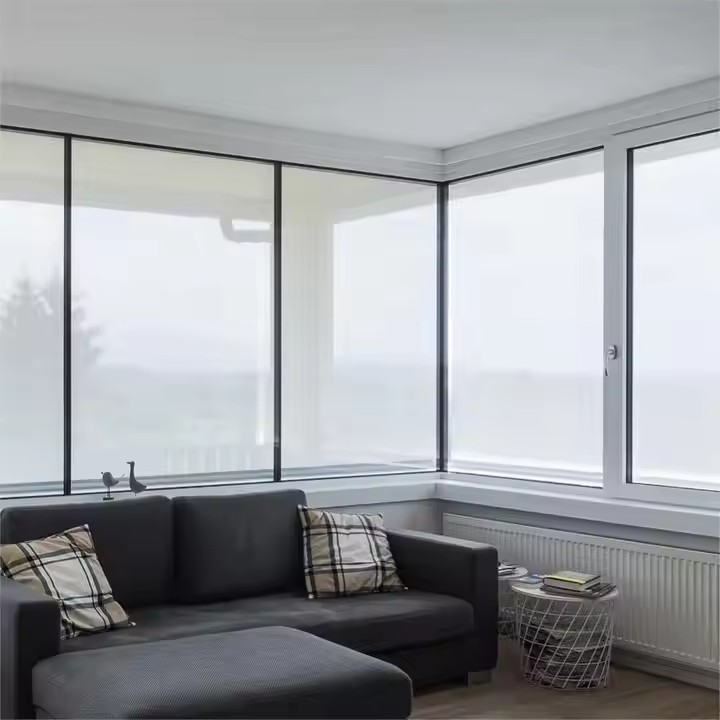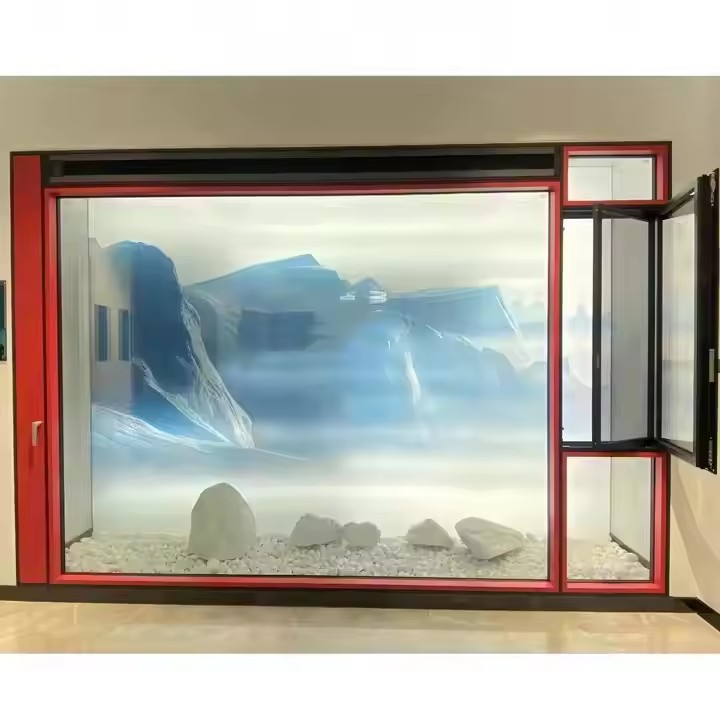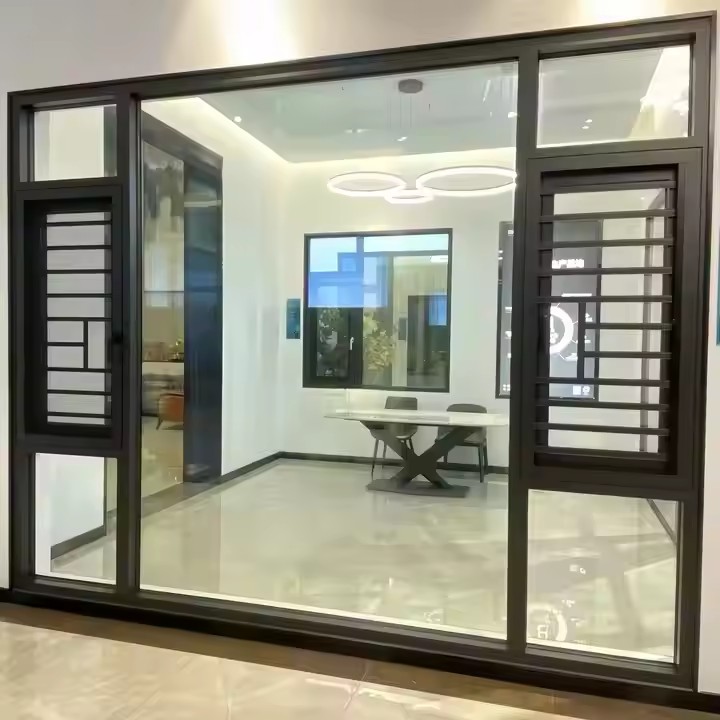- In-Depth Market Insights and Precise Positioning
The Australian doors and windows market exhibits strong regional differences. In tropical areas like northern Queensland, doors and windows must prioritize sun protection and ventilation. Low-E glass and sliding window designs are recommended to block over 90% of UV rays and improve airflow. In temperate regions like Melbourne, thermal insulation is key. Thermally broken aluminum frames combined with double-glazed units can achieve a thermal transmittance (U-value) below 1.5 W/(m²·K), meeting local energy-efficiency standards. In 2023, China accounted for 48% of Australia’s plastic window imports, but the metal doors and windows segment remains dominated by local brands such as Dowell and Rylock. Chinese companies should focus on the mid-to-high-end market. For example, SAYYAS Windows developed 5G aluminum-clad uPVC windows using frame fusion technology to solve thermal expansion issues, successfully entering Australia’s premium residential market. - Building a Full-Process Compliance and Certification System
Australia enforces strict entry standards for door and window products. Key certifications include:
Basic Performance Certification: Must comply with AS 2047 standards, covering wind pressure resistance (up to 1.5kPa), air tightness (≤2.5m³/(m·h) leakage at 75Pa), and water tightness (no leakage at 150Pa). Agencies like Intertek offer one-stop services including testing, factory audits, and energy assessments. The certification process takes about 4–8 weeks, with costs ranging from RMB 10,000 to 50,000 depending on product complexity.

Green Building Certification: Achieving a Green Star rating greatly enhances competitiveness. For example, Yade Tech’s office building used vacuum glazing and polyurethane frames to achieve a U-value below 1.0 W/(m²·K), meeting near-zero energy standards.
Fire Safety Certification: In bushfire-prone areas, products must pass AS 1530.3 fire testing, ensuring structural integrity for 30 minutes under 900°C flames. Security-related certifications also require specific testing and documentation.
- Localized R&D and Production Deployment
Material Innovation: For Australia’s high UV environment, fluorocarbon-coated aluminum profiles offer over 10 years of weather resistance. Laminated glass meets AS 1288 impact standards, suitable for coastal high-wind regions.
Smart System Integration: Integrate smart shading and solar glass. For instance, PA Window used photovoltaic windows in a Melbourne project, generating up to 2000kWh/year, aligning with local sustainable building trends.
Modular Design: Standardized components help reduce transport costs. For example, Lesso Group established a 30,000 m² showroom in Sydney and delivers modular products rapidly through its “Lesso Global” platform.
- Building Diversified Distribution Channels
Targeted Customer Acquisition at Trade Shows: Participate in events like the 2025 Sydney International Building Materials Expo, which attracts 85% of local builders and developers. Live demonstrations such as wind and rain resistance tests can highlight product strengths. At the 2024 Canton Fair, Oppein attracted 17 Australian dealers, with onsite deals exceeding USD 5 million.
Distributor Network: Collaborate with local building material chains like Bunnings and Mitre 10, which together have over 200 stores across Australia. For example, Eshili recruited its first Melbourne distributor via the China Building Expo (Guangzhou), transforming from a profile exporter to a local systems supplier.
Cross-Border E-Commerce: Launch on Amazon Australia and TikTok Shop with “2–3 day delivery” services. One window brand posted a hurricane-missile test video on TikTok, garnering over 500,000 views and boosting online orders by 300%.
- Optimizing Supply Chain and Logistics
Innovative Logistics Models: Use “ocean freight + overseas warehouse” strategies. Cainiao’s cross-border shipping cut heavy freight costs to Australia by 33%. Transfer warehouses in Sydney and Melbourne enable 48-hour deliveries.
Tariff Cost Management: Take full advantage of the China-Australia Free Trade Agreement, under which 97% of doors and windows are tariff-free. Monitor policy changes, such as the potential 10% tariff from the Trump administration in April 2025 on some non-FTA items, and plan alternative shipping routes accordingly.
Customs Compliance: Hire professional brokers to handle documentation, ensuring AS certification reports and certificates of origin are complete. One company’s failure to submit a fire test report caused a 15-day customs delay and USD 20,000 in storage fees—such risks should be avoided.

- Localized Branding and Service Systems
Content Marketing Matrix: Create brand accounts on Instagram and Facebook to post “Australian Home Renovation” case videos. For example, a video showing a 6°C indoor temperature drop after installing Low-E glass in Brisbane. Collaborate with local influencers for campaigns like the “Energy-Efficient Window Challenge,” reaching over 100,000 target users.
After-Sales Service Network: Set up service centers in Sydney and Melbourne to provide 7-year warranties and 24-hour response times. Rylock, for example, improved customer satisfaction to 92% through its localized installation teams—well above the industry average.
Corporate Social Responsibility: Participate in public welfare events like “Green Building Week” by donating energy-efficient windows to community centers to establish a sustainable brand image. SAYYAS donated AUD 500,000 worth of passive windows to a Sydney environmental group, earning mainstream media coverage and increasing brand awareness by 40%.
- Risk Control and Continuous Upgrading
Policy Risk Monitoring: Track updates to Australian building codes. For instance, the proposed 2025 “Window Energy Efficiency Upgrade Program” will require a 15% lower U-value. Companies should begin technology upgrades 18 months in advance.

